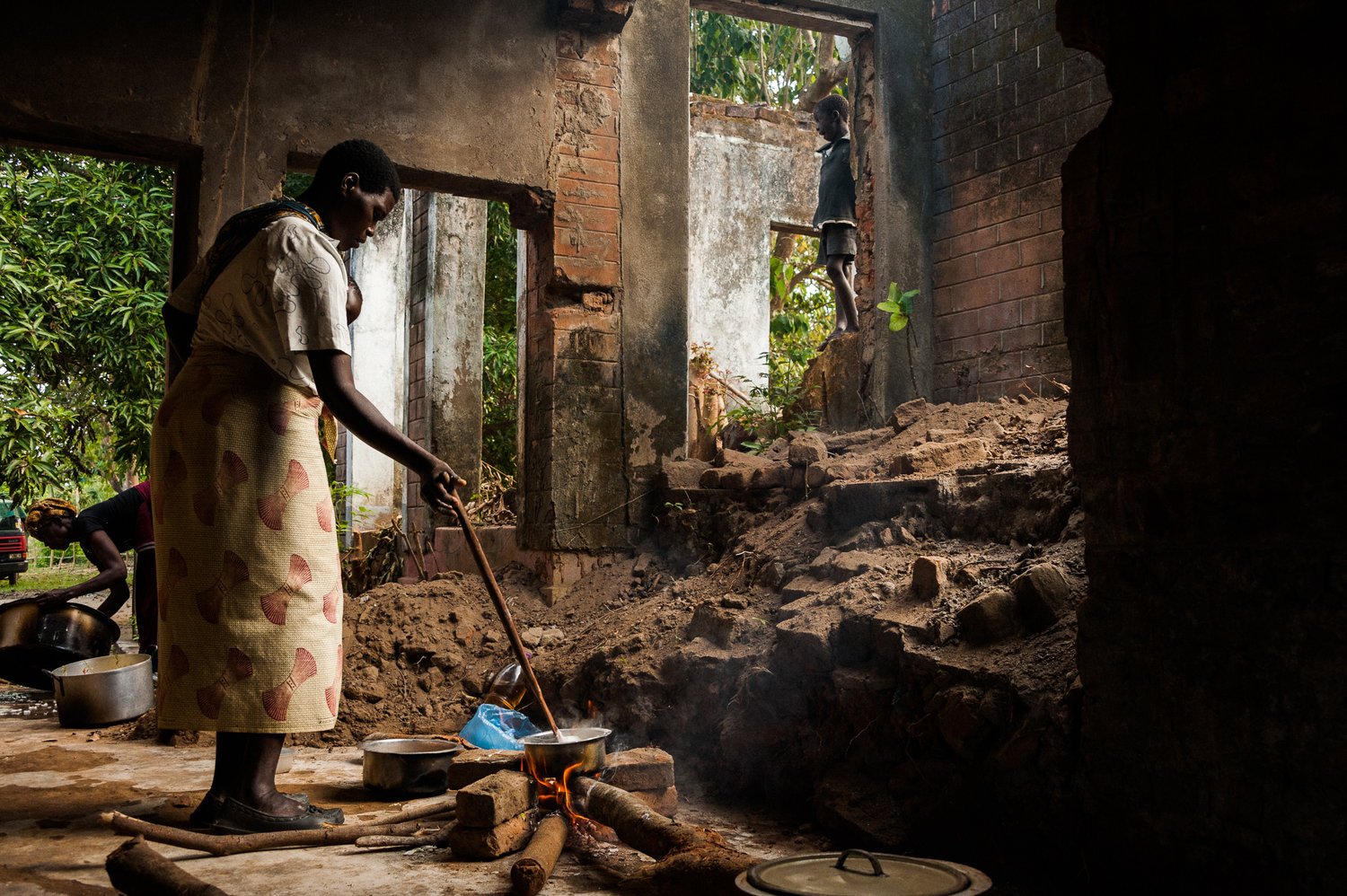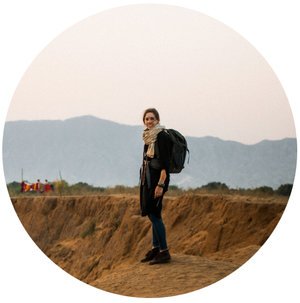Ethics in Humanitarian Photography
Ethics in Humanitarian Photography - Originally posted: 02,13,19
Imagine you’re staying in a remote village somewhere across the world. No matter if you’re volunteering or paid by an organization, you just want to capture village life. You whirl your camera around at sunset capturing the kids singing and dancing, the women walking with water or cooking over a fire, and the men coming back from the fields on the dusty roads.
I have lived this scenario multiple times. From my first volunteering opportunities abroad to being on assignment for different organizations. I thought as long as people agreed to my camera being present, or smiled back, I was in the right to take pictures. Ethical actions and good intentions must have been all I needed.
Nine years and many village sunsets later, I have come to realize how even the best intentions can’t make marketing photos for quality organizations legal. Photographing with the desire to share humanitarian stories, is not always acceptable without a few ethical guidelines.
As a humanitarian photographer I capture photos/video to help campaigns or non-profit organizations with their fundraising/marketing needs. Along with spreading awareness and knowledge of certain global issues and the amazing organizations taking action to end them.
If you are familiar with this type of work you can understand the balance of ethics involved.
In many cases these photographers are capturing sensitive situations about the person’s life that could cause embarrassment, mislead the viewer or give a negative image of the culture and people or even bring harm depending on the context.
MY INTENT is to focus on ethics in Humanitarian Photography with this post. I want to share a few things I’ve learned, what I keep in mind while shooting, and how I’m continuing to stand for ethics instead of Instagram likes.
PHOTOJOURNALISM OR HUMANITARIAN PHOTOGRAPHY
Let’s start out by saying there is a HUGE difference between photojournalism and humanitarian photography.
Volunteers fit in their own category of ethics, which I believe should wait for another time. But I’ll just say, if you are with an organization volunteering, you are NOT a photojournalist. You are directly representing the organization you are connected with. I believe you can share photos from your experience, but do it with ethics in mind and DO NOT allow anybody to use your content without understanding the situation.
EXAMPLE: I spent two months in rural Malawi living in people’s homes. I was able to capturing a very candid way of life, but I was a volunteer during this time. My photos were only used to represent the organization I was with and to share with family and friends on my blog.
My first traveling to Africa with a camera in 2011. I was a volunteer living with families in rural areas. It was when I realized my passion for capturing this type of work.
In photojournalism you are capturing the world candidly and without any adjustments. Walking into the center of the village with your large DSLR is already a disruption, hindering the ability to capture authentic life. With that being said, it may be possible that you are on assignment long enough to blend in.
In humanitarian photography I find it hard to have an authentic photojournalism approach with staff, translators and time constraints. Instead you have to be focused on capturing specific stories for the organization you are working with. So that could involve photographing a certain person cooking, going to school, working, etc.
Depending on your style, that could involve fully staging a scene or candidly capturing it from a distance. I find both to be powerful, but make sure this is something the organization and the person you are photographing feels comfortable with.
With everybody’s approval, we had some fun with the girls and made crowns and bought traditional fabrics. It ended up being so fun and the girls loved it!
LESSONS OF LOVE
When I look back at my first couple trips abroad with my camera, I can’t believe how insensitive I was. I was so excited to feel like I was discovering a passion I’d never pursed that I only cared about capturing “epic” cultural moments.
I remember thinking every photo I took was undoubtedly going to be published in National Geographic.
I think my first lesson in ethics was during my time in Malawi, in 2011. Ignorant to privacy, I remember taking my camera into a hospital with Malaria patients, when we passed by a room full of beds and a family weeping.
I didn’t take a single photo and walked out twisted with emotions. How could I pursue this new discovered passion in photography, if I didn’t have the guts to click the shutter?
Walking out of the hospital I had this knot in my stomach I’ll never forget, when I saw a large gathering of women. They were all the wives, sisters and daughters of people in the hospital bent over cooking. I asked if I could photograph them and excited to show off their meals, they posed for a photo.
It wasn’t a National Geographic moment, but the beginning of me understanding my underlying passion. It was me learning that starting with love, respect and dignity is a lesson we can all practice more often.
Women cooking outside a hospital in Malawi, Africa 2011.
BEFORE ENTERING THE FIELD
A few things to think about before ever setting foot into the country you’ll be working in.
Research the organization and culture.
I read into what is happening culturally in terms of women, health, education, religion, etc. and how that pertains to the organization.
Look at past content for the organization and the tone of their stories and visuals.
I put a moodboard together for inspiration - which is fun to show people you’re photographing!
Have a really good understanding of what you are representing.
Document and listen to any advice from the organization that has been in the field multiple times.
How should you dress so you’re able to move about without distraction.
What should you expect in different scenarios.
Discuss ethical guidelines with your organization. Something I’m still learning how to structure, but starting out with a simple discussion is the way to start.
Ask if they have any ethical guidelines in place?
I personally work a lot with smaller, grass-roots organizations with 100% good intentions, but might not have a formalized structure in place. So start the communication early.
Talk about having separate galleries for the content directly related to their work and the “cultural” photos you’ll be taking. (see tip below)
SHOOTING CULTURAL ELEMENTS
The photos that organizations need to help depict lifestyle and culture of the country they are working in. This isn’t about following hard rules, it’s about keeping ethical guidelines in mind and learning from each situation.
I focus on textures, colors, and nature elements.
If I’m trying to photograph random people, I try to photograph their hands, side profile or photograph them from afar so you can’t really see them.
If I have asked for consent and the person doesn’t mind me getting closer for a portrait then I do a few different things:
Show them the photo afterwards.
Thank them and share in some laughter.
If you're able to, explain the purpose for the photo.
These are some of my favorite photographs from my time abroad and some of the hardest to differentiate on ethical usage. I personally don’t believe they should be used to represent a cause or organization they're not supported by. Which is a mistake I have made in the past.
MY TIP: Give your Organization two separate galleries. One for cultural elements and one of their actual work and the people they’re supporting. If they do not have ethical guidelines in place, give them examples on how to use these photos in a way that doesn’t confuse their viewers.
ORGANIZATION’S SITE WORK
You are now surrounded by people supported or partnered with the organization you’re working for!
Introduce yourself, have fun, share a meal, play a game and just laugh! I have noticed when I don’t have as much time to do that, the more closed off my portraits seem.
Ask for verbal consent and written consent as often as possible.
This can be a part of that discussion with your client; do they understand the background of the person/people you are about to photograph? Who is being supported by the organization, are there some subjects that are not?
Show your subjects past photos and tell them what you hope this content will help with. I showed a girl photos I had taken of her from a few years back and she was so so excited! She couldn’t wait to now share her story in our interview.
During interviews, always, always say you don’t have to share. This last time we had a counselor present and it was so wonderful!
If you’re posing subjects, do it with respect and dignity. I believe in creative expression, but don’t make up a story or contribute to “poverty porn”.
EXAMPLE: When we arrived to one of the Covenant Children’s Homes, (CCH) the village kids were excited to join in, but they’re not sponsored or supported financially by CCH. With the help of the CCH Director, I have a clear understanding of which kids were sponsored and focused all my work on them.
It doesn’t mean I didn’t photograph the village kids, it just means with verbal consent I will only use it for my own storytelling. Their photos would never be used to raise money for a cause they are not supported by.
I haven’t been perfect with this in the past and I can only continue to do better with each assignment.
I challenge you to ask yourself important questions:
Have I been ethical in my humanitarian work and how can I continue to better my ethical guidelines within my work and my partners!
How can I continue to share these stories that help spread awareness and funding to amazing organizations with self-worth and grace?
How can I differentiate between storytelling and marketing?
How can I work alongside the organization to uphold these values?
Thank you for taking the time to read my personal thoughts on Ethics in Humanitarian Photography.
I would love to know if you found this helpful or have any questions or feedback!
Stay tuned for more travels, photo tips and thoughts by signing up for my newsletter below!
TARA SHUPE
Tara Shupe is a Humanitarian Photographer and Video Storyteller, constantly traveling with a camera attached to the hip and a notebook in her pocket. With over 10 years of experience in the field, Tara approaches each story intimately with a hope for inspiring others to think beyond their comfort zone.




















I still hold on to the belief that there is more good in this world than it’s always easy to believe at times.
From global communities rallying to save an endangered species, to hot tea and laughter being shared in places where even the simplest resources are scarce…